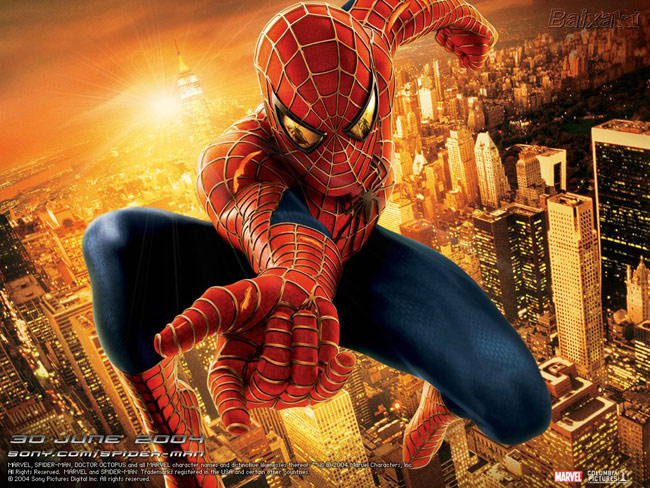Amazing! How Structure Explains Spider-Man's Webs (Op-Ed)


Matt Shipman is a science writer and public information officer at North Carolina State University. This Op-Ed was adapted from a post on The Abstract, a blog Shipman writes along with Communication Breakdown. He contributed this article to Live Science's Expert Voices: Op-Ed & Insights.
Spider-Man's webs are pretty impressive, capable of trapping supervillains, supporting Spidey's weight as he swings through New York and even suspending cars above city streets. But what are these webs made of? And how does Spider-Man construct them?
Real spider webs are notoriously strong; spider silk has a tensile strength of up to 1.75 gigapascals (GPa), or just over 178 kilograms (392.4 pounds) per square millimeter in cross-section. Tensile strength is the amount of force required to pull a material until it breaks.
Carbon nanotubes are even stronger, though, able to handle 63 GPa (or more). (However, according to the 1986 "Official Handbook of the Marvel Universe," Spidey's webs are made of a nylon-like material that can support only a measly 0.5 GPa.)
But can the strength of a specific material alone account for the properties of Spidey's web as seen in "The Amazing Spider-Man 2"?
"The actual material that makes up the web would likely be only part of the equation," said Suveen Mathaudhu, a program manager in the materials science division of the U.S. Army Research Office, adjunct materials science professor at NC State and hardcore comics fan. "The web structure at a variety of length scales would also be enormously important."
Inspired by Rhett Allain's great work at at Wired's "Dot Physics" blog on the physics of the webslinger's web, Mathaudhu and I wanted to talk about the importance the web's structure. [Crazy! Spider Launches Slingshot Web to Snag Prey (Video )]
Get the world’s most fascinating discoveries delivered straight to your inbox.
Mathaudhu notes that Markus Buehler, an MIT professor who has done research on spider silk, reported in 2011 that the unique alignment and confinement of the nanoscale fibrils in spider silk explain the paradoxical strength, toughness and extensibility in what would otherwise be a weak material.
"Think of bridge cables or climbing ropes," Mathaudhu says. "They're not just a bundle of parallel fibers. They're a collection of hierarchically arranged fibers that are interconnected in a way where friction and bonding between the fibers improves their performance."
So, the structure of the web is clearly important. But what is Spidey's web actually made of?
In his post, Allain hypothesizes that the web may be made of carbon nanotubes. If so, the world may see something Spidey-esque in real life sooner rather than later.
"Horatio Espinosa, a professor at Northwestern University, has been studying how to hierarchically bundle and link individual carbon nanotubes with high energy irradiation in a way that improves the nanotubes' overarching strength, stiffness and toughness," Mathaudhu said. (And if a radioactive spider could turn a regular guy into Spider-Man, maybe it can do something similarly spectacular for carbon nanotubes?)
In short, while it may be best to suspend disbelief to enjoy comics and comics-based movies, those fantastical tales can also inspire people to ask questions about what is possible. And that's worth celebrating. In this case, it serves as a reminder that form does affect function — and that researchers are working on projects that could amaze (even if they don't exactly create Spider-Man's webs).
The author's most recent Op-Ed was "Why Captain America's Shield Is Basically a Star-Spangled Supercapacitor." This Op-Ed was adapted from "What Makes Spider-Man's Web So Strong?" on The Abstract. Follow all of the Expert Voices issues and debates — and become part of the discussion — on Facebook, Twitterand Google +. The views expressed are those of the author and do not necessarily reflect the views of the publisher. This version of the article was originally published on Live Science.



